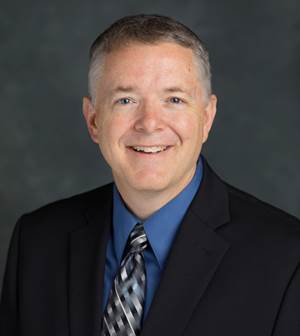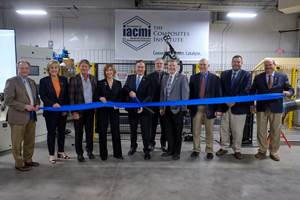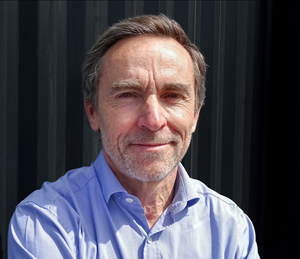Revisiting some past perspectives
CW columnist and composites-industry consultant Dale Brosius takes a look back at some past "Perspectives & Provocations" columns with an eye to how the perspectives then match up with the realities of today's high-performance composites market.
My first “Perspectives and Provocations” column appeared two years ago, in the June 2013 issue of CW predecessor Composites Technology. Twenty-four episodes later, it is useful to look back on several of those columns and offer some updates, based on my personal experience.
That initial column looked at the large commitment BMW (Munich, Germany) and SGL Carbon SE (Wiesbaden, Germany) are still making to put carbon fiber into automotive primary structure, via the i3 and i8 platforms, and it questioned whether any other OEM would follow suit (see "Where is the automotive composites supply chain?" under "Editor's Picks," at top right). Two years later, none have done so, although several have announced closer ties to fiber suppliers as they continue to evaluate the potential. Recently, I had the pleasure of visiting BMW engineers and managers in Munich, and had substantial discussions about the path they have traveled, lessons learned and the road forward. In March this year, I noted here that I believed they eventually would like to see carbon fiber used on their mainstream 3- and 5-Series platforms — a fact they did confirm — but it is going to take significant steps beyond today’s costs and cycle time to get there.
I also was able to see, up close and personal, the preforming and molding processes used on the i3 and i8 structures. One can grasp immediately areas for improvement, but at the same time, one cannot help but be impressed by what is already being done. Simply put, BMW is well ahead of the rest of the industry in understanding what can be done with carbon fiber, and the new 7-Series platform, a true multi-material vehicle of steel, aluminum and carbon fiber (including recycled fiber), is evidence of what they’ve learned. Most of all, I came away impressed with BMW’s openness and willingness to share these experiences with others, because it knows that getting to true cost reduction requires more OEMs and suppliers to get on board and grow the market.
In January of this year, I attributed slowing growth of carbon fiber sales into sporting goods to lack of innovation, combined with the industry’s becoming a victim of its own success. I did mention I was in the market for a new tennis racquet, and after trialing several, I did buy the latest Wilson ProStaff model, which features braided carbon and aramid fibers in the throat area to improve torsional stiffness. Shortly after, I was contacted by Oxeon, which offered to let me try one of the new line of Prince racquets, which use Oxeon’s TeXtreme Spread Tow thin fabric in the handle and throat areas, also to reduce twisting upon ball strike. I selected a model that matched very closely my Wilson racquet specifications in terms of overall weight, balance and head size, and have been testing it. While I’m far from having professional talent, the Prince racquet has a different “feel,” even though it’s very close to the Wilson racquet in specifications. I’m impressed with the control it offers on volleys and overheads, and I am now playing with it as much as I play with my Wilson. The Prince also has a very “cool” look to it, and the pattern of the TeXtreme fabric is, deliberately, visible. Both racquets are improvements upon my previous equipment … so maybe there is a bit more engineering and innovation in this market than I initially postulated.
My column in High Performance Composites from March 2014 was very bullish on the prospect of a US Department of Energy (DoE)-sponsored composites manufacturing institute, noting that such investments in the non-defense side of advanced composites was greatly needed to boost innovation for vehicle and wind energy applications, among others. Following a lengthy proposal process over the course of 2014, President Obama announced that the DoE had selected a team for the new institute, led by the University of Tennessee (Knoxville, TN, US). Staked with an initial investment of US$70 million from the DoE and more than that in matching state and industry cost-share, the Institute for Advanced Composites Manufacturing Innovation (IACMI) seeks to greatly reduce the costs of advanced carbon fiber and fiberglass parts and improve the predictive reliability of simulation and design tools to make such parts compelling options for lightweighting and more efficient energy applications.
IACMI operations should officially commence soon. And I have officially joined the Institute as its chief commercialization officer. I am looking forward to helping industry work with the IACMI to make this dream a reality. And, of course, to stimulate subject matter for future columns ….
Related Content
IACMI names Chad Duty as CEO
Duty will fully assume his new role as CEO in April 2023, while continuing his position as an engineering professor at the University of Tennessee, Knoxville.
Read MoreIACMI receives funding renewal from U.S. DOE to continue composites R&D
Over the next five years, IACMI aims to further composites R&D efforts to support U.S. decarbonization and its pillars: technology, economy and workforce development.
Read MorePeople in composites: April 2023
Concordia Engineered Fibers, Nawa Technologies, IACMI, Joby Aviation and Akarmak America have made new personnel announcements in April 2023.
Read MoreThe state of recycled carbon fiber
As the need for carbon fiber rises, can recycling fill the gap?
Read MoreRead Next
Where is the automotive composites supply chain?
Long-time composites industry observer Dale Brosius, now a consultant and the president of Dayton, Ohio-based Quickstep Composites, the U.S. subsidiary of Australia-based Quickstep Technologies (Bankstown Airport, New South Wales), asks some hard questions about the composites industry's readiness to supply the auto industry with the materials and processes necessary to meet coming lightweighting challenges.
Read MoreComposites end markets: Energy (2024)
Composites are used widely in oil/gas, wind and other renewable energy applications. Despite market challenges, growth potential and innovation for composites continue.
Read MoreFrom the CW Archives: The tale of the thermoplastic cryotank
In 2006, guest columnist Bob Hartunian related the story of his efforts two decades prior, while at McDonnell Douglas, to develop a thermoplastic composite crytank for hydrogen storage. He learned a lot of lessons.
Read More








.jpg;maxWidth=300;quality=90)

















